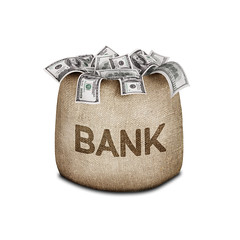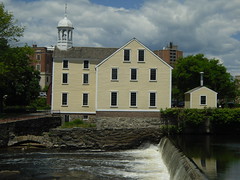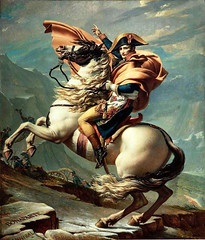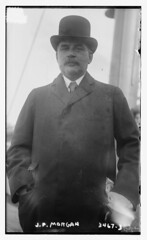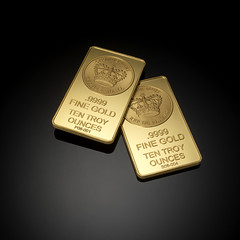| 5309694281 | Election of 1960 | In this election, Democrat John F. Kennedy ran against Republican Richard M. Nixon. Television was perhaps the most decisive factor in this very close race which Kennedy won. (p. 601) |  | 0 |
| 5065277773 | John F. Kennedy | In 1960, this 43 year old senator from Massachusetts appeared more vigorous and comfortable on the first televised debates than Richard Nixon. He won the presidency in a very close election, that many Republicans including Nixon, said had been stolen by illegal voting in some Democrat controlled polls. (p. 601) |  | 1 |
| 5065277775 | New Frontier | President Kennedy proposed new domestic programs such as aid to education, federal support of health care, urban renewal, and civil rights. These programs did not become law until many of them passed in the Lyndon Johnson administration. (p. 601) |  | 2 |
| 5065277774 | Jacqueline Kennedy | As first lady in the early 1960s, she brought style, glamor, and appreciation of the arts to the White House. (p. 601) |  | 3 |
| 5065277836 | Robert Kennedy | He was attorney general during his brother John Kennedy's administration. In 1964, he was elected as a senator in New York. In 1968, he decided to enter the presidential race after Eugene McCarthy's strong showing in New Hampshire. On June 5, 1968, he won a major victory in the California Democratic primary but was shot and killed just after his victory speech. (p. 616) |  | 4 |
| 5309700693 | race to the moon | President Kennedy committed the U.S. to land on the moon by the end of the 1960s decade. (p. 602) |  | 5 |
| 5309702040 | assassination in Dallas | On November 22, 1963, in Dallas, Texas, after just two and a half years in office, President John Kennedy was shot and killed. (p. 603) |  | 6 |
| 5065277784 | Warren Commission | Chief Justice Earl Warren headed this commission which concluded that Lee Harvey Oswald was the lone assassin in President Kennedy's murder. Many unanswered questions lead to various theories about the assassination. For many Americans, this marked the beginning of the loss of credibility in government. (p. 604) |  | 7 |
| 5065277776 | Peace Corps | In 1961, President Kennedy set up this organization, which recruited young American volunteers to give technical aid to developing countries. (p. 602) |  | 8 |
| 5065277777 | Alliance for Progress | In 1961, President Kennedy created this organization to promote land reform and economic development in Latin America. (p. 602) |  | 9 |
| 5065277778 | Trade Expansion Act | In 1962, this act authorized tariff reduction with the recently formed European Economic Community (Common Market) of Western European nations. (p. 602) |  | 10 |
| 5065277779 | Bay of Pigs | In April 1961, the Central Intelligence Agency (CIA) trained Cuban exiles to attempt the invasion of Cuba and the overthrow of Fidel Castro. The invasion failed and Castro tightened his grip on Cuba. (p. 602) |  | 11 |
| 5065277780 | Berlin Wall | In 1961, the East Germans, with Soviet backing built this wall around West Berlin to stop East Germans from escaping to West Germany. (p. 602) |  | 12 |
| 5065277781 | Cuban missile crisis | In October 1962 the United States discovered that the Soviets were building underground offensive missile sites in Cuba. President Kennedy responded by announcing a naval blockade of Cuba until the missiles were removed. Nuclear war seemed possible until Soviet premier Nikita Khrushchev agreed to remove the missiles in exchange for a pledge that the U.S. would not invade Cuba and the U.S. would remove some missiles from Turkey. (p. 602) |  | 13 |
| 5065277782 | flexible response | President Kennedy increased spending on conventional arms and mobile military forces. This type of military force could be used in response to smaller wars in Africa and Southeast Asia and avoid the possibility of having to use nuclear weapons in these conflicts. (p. 603) |  | 14 |
| 5065277783 | Nuclear Test Ban Treaty | In 1963, the United States and 100 other nations signed this agreement to end the testing of nuclear weapons in the atmosphere. (p. 603) |  | 15 |
| 5065277785 | Lyndon Johnson | On November 22, 1963, just two hours after John Kennedy's assassination he took presidential oath of office aboard an airplane at the Dallas airport. In the 1964 presidential election he easily defeated Senator Barry Goldwater. In 1968, he decided to not run for president again. (p. 604) |  | 16 |
| 5065277786 | Great Society | President Lyndon Johnson was determined to expand the social reforms of the New Deal and passed a long list of new programs that would have a lasting effect on American society. (p. 604) |  | 17 |
| 5065277787 | War on Poverty | In 1964, President Johnson declared "an unconditional war on poverty". (p. 604) |  | 18 |
| 5309712883 | Michael Harrington, "The Other America" | In 1962 this best-selling book that focused on the 40 million Americans living in poverty. (p. 604) |  | 19 |
| 5309714204 | Election of 1964 | In this presidential election, Democrats Lyndon Johnson and Hubert Humphrey ran against the very conservative Senator Barry Goldwater of Arizona. Johnson and Humphrey easily won, capturing 61 percent of the popular vote. (p. 605) |  | 20 |
| 5065277789 | Barry Goldwater | The Republican presidential candidate in 1964. He was an Arizona Senator who advocated ending the welfare state, including TVA and Social Security. (p. 605) |  | 21 |
| 5065277790 | Medicare; Medicaid | This first program provides health insurance program for all people 65 years of age and older. This second program provides funds to states to pay for medical care for the poor and disabled. (p. 605) |  | 22 |
| 5065277791 | Elementary and Secondary Education Act | This 1965 act provided federal funds to poor school districts, funds for special education, and funds to expand Head Start. (p. 605) |  | 23 |
| 5309725754 | Immigrant Act | This 1965 act abolished discriminatory quotas based on national origins. (p. 605) |  | 24 |
| 5309730674 | National Foundation on the Arts and Humanities | This agency formed in 1965 provided federal funding for the arts and for creative and scholarly projects. (p. 605) |  | 25 |
| 5309733358 | DOT and HUD | President Lyndon Johnson established the Department of Transportation (DOT) and the Department of Housing and Urban Development (HUD). (p. 606) |  | 26 |
| 5065277792 | Ralph Nader, "Unsafe at Any Speed" | His 1965 book lead Congress to pass automobile industry regulations that would save thousands of lives. (p. 606) |  | 27 |
| 5065277793 | Rachel Carson, "Silent Spring" | Her 1962 book exposed the use of pesticides and would lead Congress to pass clean air and water laws. (p. 606) |  | 28 |
| 5065277794 | Lady Bird Johnson | This first lady contributed to improving the environment with her Beautify America campaign which lead to the Highway Beautification Act. (p. 606) |  | 29 |
| 5065277795 | Civil Rights Act of 1964 | This act made segregation illegal in all public facilities and gave the federal government additional powers to enforce school desegregation. (p. 606) |  | 30 |
| 5065277796 | Equal Employment Opportunity Commission | This agency was created to end discrimination in employment on the basis of race, religion, sex, or national origin. (p. 606) |  | 31 |
| 5065277797 | 24th Amendment | In 1964, this amendment abolished the practice of collecting a poll tax, one of the measures that discouraged poor people from voting. (p. 606) |  | 32 |
| 5065277798 | Voting Rights Act of 1965 | In 1965, this act ended literacy tests and provided federal registrars in areas in which blacks were kept from voting. (p. 606) |  | 33 |
| 5065277799 | James Meredith | In 1962, a young African American air force veteran who attempted to enroll in the University of Mississippi. President Kennedy sent 400 federal marshals and 3,000 troops to protect his rights to attend the university. (p. 607) |  | 34 |
| 5065277837 | George Wallace | In 1968, he was the American Independent party presidential candidate. The growing hostility of many whites to federal desegregation, antiwar protests, and race riots was tapped by his campaign. (p. 616) |  | 35 |
| 5065277800 | Martin Luther King Jr. | In August 1963, he led 200,000 people in a peaceful March on Washington. (p. 607) |  | 36 |
| 5065277801 | March on Washington | In August 1963, Dr. Martin Luther King led one of the largest and most the successful demonstrations in U.S. history when about 200,000 blacks and whites took part in this peaceful march. The highlight was Dr. King's famous "I Have a Dream Speech" at the Lincoln Memorial. (p. 607) |  | 37 |
| 5065277802 | "I Have a Dream" Speech | The greatest speech in American history (according to americanrhetoric.com). It was the highlight of the August 1963 March on Washington in which Dr. Martin Luther King in front of the Lincoln Memorial made an emotional appeal for the end of racial prejudice. (p. 607) |  | 38 |
| 5309746446 | March to Montgomery | In 1965, this was a voting rights march from Selma Alabama to the capitol in Montgomery. Television showed protesters being beaten and tear gassed and the march was a turning point in the civil rights movement. President Johnson sent federal troops to protect the marchers. (p. 607) |  | 39 |
| 5065277803 | Black Muslims | Their leader Elijah Muhammad preached black nationalism, separatism, and self-improvement. (p. 608) |  | 40 |
| 5065277804 | Malcom X | He acquired a reputation as the Black Muslim movement's most controversial voice. He criticized Martin Luther King as "an Uncle Tom" and advocated self-defense against white violence. (p. 608) |  | 41 |
| 5065277805 | Student Nonviolent Coordinating Committee | This civil rights organization of young blacks, influenced by Malcolm X, repudiated non-violence and advocated "black power" and racial separatism. (p. 608) |  | 42 |
| 5065277806 | Congress of Racial Equality | This civil rights organization of young blacks was influenced by Malcolm X. (p. 608) |  | 43 |
| 5065277807 | Stokely Carmichael | The leader of the Student Nonviolent Coordinating Committee (SNCC) repudiated non-violence and advocated "black power" and racial separatism. (p. 608) |  | 44 |
| 5065277808 | Black Panthers | In 1966, this organization was founded by Huey Newton, Bobby Seale and other militants as a revolutionary socialist movement advocating self-rule for American blacks. (p. 608) |  | 45 |
| 5065277809 | Watts riots, race riots | In the summer of 1965 the arrest of a black motorist in the Watts neighborhood of Los Angeles led to a six-day riot that resulted in the deaths of 34 people and the destruction of 700 buildings. (p. 608) |  | 46 |
| 5309753263 | de facto segregation | Segregation and discrimination caused by racists attitudes in the North and the West. (p. 608) |  | 47 |
| 5065277810 | Kerner Commission | In 1968, this federal investigation of many riots concluded that racism and segregation were chiefly responsible and that the U.S. was becoming "two societies, one black, one white-separate and unequal". (p. 608) |  | 48 |
| 5309757449 | King assassination | In April 1968, while standing on a motel balcony in Memphis, Tennessee Martin Luther King was shot and killed by a white man. Riots erupted in hundreds of cities across the U.S. and resulted in 46 deaths. (p. 609) |  | 49 |
| 5065277811 | Warren Court | The Supreme Court under Earl Warren. It had an impact on the nation comparable to that of the John Marshall Court. (p. 609) |  | 50 |
| 5309761413 | Mapp v. Ohio | In 1961, this Supreme Court case ruled that illegally seized evidence cannot be used in court against the accused. (p. 609) |  | 51 |
| 5065277813 | Gideon v. Wainwright | In 1966, this Supreme Court case ruled that that state courts must provide counsel for poor defendants. (p. 609) |  | 52 |
| 5065277814 | Escobedo v. Illinois | In 1964, the Supreme Court ruling that required the police to inform an arrested person of his or her right to remain silent. (p. 609) |  | 53 |
| 5065277815 | Miranda v. Arizona | In 1966, the Supreme Court extended the ruling in Escobedo to include the right to a lawyer being present during questioning by the police. (p. 609) |  | 54 |
| 5065277816 | reapportionment | The process of reallocating seats in the House of Representatives. (p. 609) |  | 55 |
| 5065277817 | Baker v. Carr | In 1962, the Supreme Court declared it was unconstitutional for one house of a state legislature to draw district lines that strongly favored rural areas, to the disadvantage of large cities. (p. 609) |  | 56 |
| 5065277818 | one man, one vote | This principle meant that election districts would have to be redrawn to provide equal representation for all of a state's citizens. (p. 609) |  | 57 |
| 5065277819 | Yates v. Unted States | In 1957, the Supreme Court ruled that the first amendment protected radical and revolutionary speech, even by Communists, unless it was a "clear and present danger" to the safety of the country. (p. 610) |  | 58 |
| 5065277820 | separation of church and state | Engel vs. Vitale ruled that state laws requiring prayers and Bible readings in the public schools violated the first amendments provision for this. (p. 610) |  | 59 |
| 5065277821 | Engel v. Vitale | In 1962, the Supreme Court ruled that state laws requiring prayers and Bible readings in the public schools violated the first amendment's provision for separation of church and state. (p. 610) |  | 60 |
| 5309778627 | Griswold v. Connecticut | In 1965, the Supreme Court ruled that in recognition of a citizen's right to privacy, a state could not prohibit the use of contraceptives by adults. (p. 610) |  | 61 |
| 5309781347 | privacy and contraceptives | In 1965, the Supreme Court ruled in Griswold v. Connecticut case that a citizen's had the right to privacy, and a state could not prohibit the use of contraceptives by adults. (p. 610) |  | 62 |
| 5065277822 | Students for a Democratic Society | In 1962, this group of radical students led by Tom Hayden issued a declaration of purposes known as the Port Huron Statement. It called for university decisions to be made through a participatory democracy. (p. 610) |  | 63 |
| 5065277823 | New Left | Activists and intellectuals who supported Tom Hayden's ideas. (p. 610) |  | 64 |
| 5561661208 | Weathermen | They were the most radical fringe of the SDS, they embraced violence and vandalism in their attacks on American institutions. (p. 611) |  | 65 |
| 5065277824 | counterculture | Expressed by young people in their rebellious styles of dress, music, drug use, and for some, communal living. (p. 611) |  | 66 |
| 5309781348 | Woodstock | In the summer of 1969, about 500,000 million young people descended on upper New York State farm for what turned into a free music festival. In the early morning hours of the last day Jimi Hendrix played his jaw dropping version of the "Stars Spangled Banner" featuring amplifier feedback to convey bombs falling, jets overhead, and cries of human anguish. (p. 611) |  | 67 |
| 5309782950 | Alfred Kinsey | In the late 1940s he did pioneering surveys of sexual practice. (p. 611) |  | 68 |
| 5065277825 | sexual revolution | One aspect of counterculture that continued beyond the 1960s was a change in many Americans' attitudes toward sexual expression. (p. 611) |  | 69 |
| 5065277826 | women's movement | The increased education and employment of women in the 1950s, the civil rights movement, and the sexual revolution all contributed to a renewal of this movement in the 1960s. (p. 612) |  | 70 |
| 5065277827 | Betty Friedan, "The Feminine Mystique" | She gave the women's movement a new direction by encouraging middle-class women to seek fulfillment in professional careers rather than confining themselves to the roles of wife, mother, and homemaker. (p. 612) |  | 71 |
| 5065277828 | National Organization for Women | In 1966, this organization was formed. They adopted activist tactics of other civil rights movements to secure equal treatment of women, especially for job opportunities. (p. 612) |  | 72 |
| 5065277829 | Equal Pay Act | In 1963, this act prohibited discrimination in employment and compensation on the basis of gender. (p. 612) |  | 73 |
| 5065277830 | Equal Rights Amendment (ERA) | This proposed constitutional amendment stated that "equality of rights under the law shall not be denied or abridged by the United States or by any state on account of sex". It just missed being passed. (p. 612) |  | 74 |
| 5309788794 | military advisors | By 1963, the United States was becoming more involved in helping South Vietnam. President Kennedy provided military advisors and 16,000 support troops, but not combat troops. (p. 613) |  | 75 |
| 5309791505 | fall of Diem | In 1963, South Vietnam's leader was overthrown and killed by South Vietnamese generals. (p. 613) |  | 76 |
| 5065277832 | Tonkin Gulf Resolution | In 1964, North Vietnamese gunboats allegedly fired on U.S. warships off the coast of Vietnam. Congress gave approval for President Johnson to wage war in Vietnam. (p. 613) |  | 77 |
| 5309797540 | escalation of troops | In April 1965, President Johnson used U.S. combat troops in Vietnam for the first time. Johnson continued a step-by-step escalation and by March 1969 there were 540,000 troops deployed to Vietnam. (p. 613) |  | 78 |
| 5309799115 | General Westmoreland | Commander of U.S. armed forces in Vietnam. (p. 614) |  | 79 |
| 5309799116 | credibility gap | The media's term for President Johnson's reluctance to speak frankly with the American people about the scope and costs of the Vietnam war. (p. 614) |  | 80 |
| 5065277833 | Tet Offensive | In January 1968, the Vietcong (North Vietnam troops) launched an all-out surprise attack on almost every provincial capital and American base in South Vietnam. The U.S. military counterattacked and recovered the lost territory. However, the destruction viewed on television in the United States, appeared as a setback for the U.S. efforts. (p. 615) |  | 81 |
| 5065277834 | hawks and doves | Hawks believed that the Vietnam War was part of a Soviet-backed Communist master plan to conquer all of Southeast Asia. Doves believed it was a civil war, fought by Vietnamese nationalists and some Communists who wanted to unite their country by overthrowing a corrupt Saigon government. (p. 615) |  | 82 |
| 5309803108 | LBJ withdraws | On March 23, 1968, President Johnson made a television address in which he said that the U.S. would limit bombing of North Vietnam and negotiate peace. He also announced that he would not run for president in 1968. (p. 615) |  | 83 |
| 5065277835 | Eugene McCarthy | The first antiwar candidate to challenge for the 1968 Democratic presidential nomination. (p. 615) |  | 84 |
| 5309805972 | RFK assassination | On June 5, 1968, after he had won the California Democratic primary Robert F. Kennedy (RFK) was shot and killed by an Arab nationalist. (p. 616) |  | 85 |
| 5065277838 | Hubert Humphrey | The liberal Democratic candidate in the presidential election of 1968. He had been Lyndon Johnson's vice president. (p. 616) |  | 86 |
| 5309826980 | Chicago convention | The 1968 Democratic Convention was held in Chicago. Television showed what looked like a "police riot" as antiwar protesters were brutally beaten. (p. 616) |  | 87 |
| 5309831769 | white backlash | In the 1968 presidential election, the growing hostility of many whites to federal desegregation, antiwar protests, and race riots was tapped by Governor George Wallace of Alabama. He became the American Independent party's presidential candidate. (p. 616) |  | 88 |
| 5309848046 | Richard Nixon | He served as vice president under Eisenhower from 1953 to 1960. He was nominated as the Republican candidate for president in 1960, but lost the close election to John Kennedy. In 1968 he was elected president, and again in 1972. However, he was forced to resign the presidency in 1974. (p. 600) |  | 89 |









